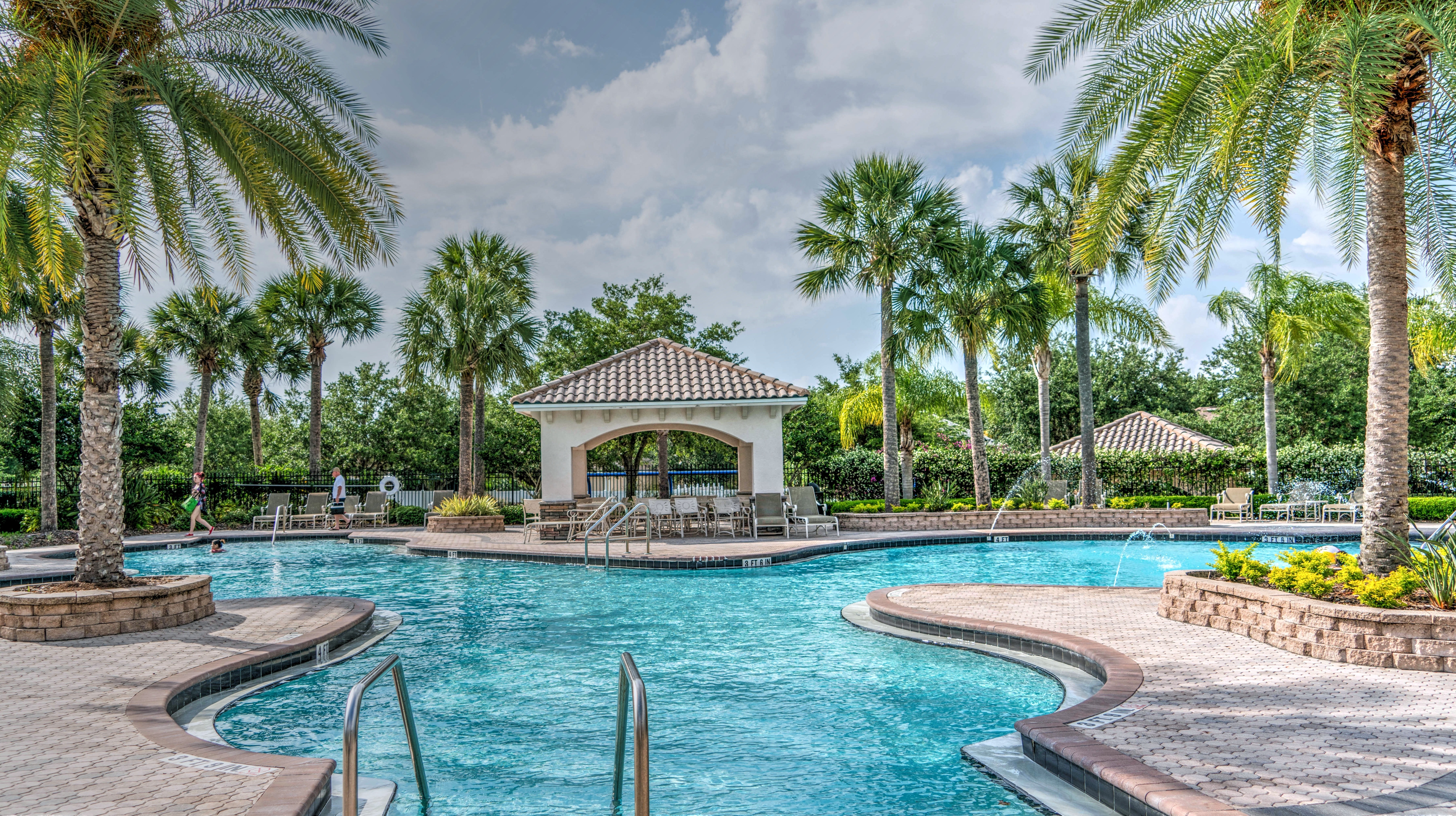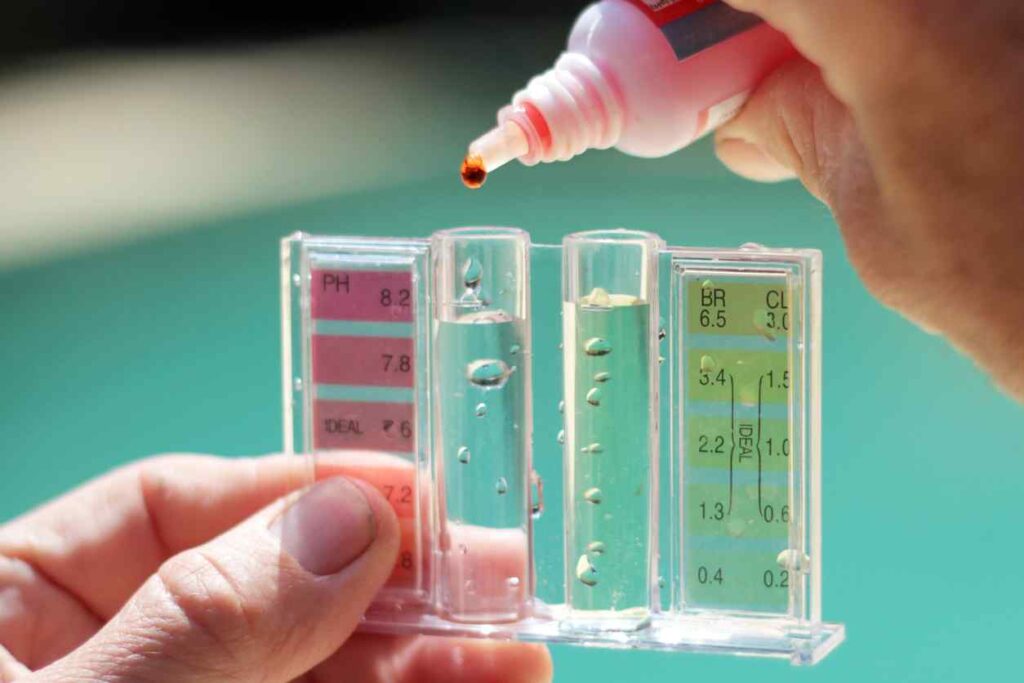
Look After Pool Water Chemistry
Pools are very simply, mild chemical baths. Most pools and spas use some form of chlorine for sanitation.
In order to not waste your money on unnecessary (and often dangerous chemicals), you should manage or have managed the pool water chemistry, well. An out of balance pool may not only be uncomfortable to swim in (it may be unhealthy even), but it can also result in the shortening of the life of the pool filtration system and pool surfaces themselves.
So close and well managed pool water chemistry will save you money both in the short and long term.
Chlorine is a strong oxidizing agent and is quite dangerous if mishandled. Hence for pool use its either sold in diluted liquid form (12.5%) tablets or generated via a saltwater chlorinator.
There is a lot of information written about pool water chemistry. Much of it by commercial enterprises who are keen to sell you something. There is little unbiased information available for the home pool user.
Pool water can be a very complex mixture of metals, nonmetals, salts, oxides, chemicals, oils and phosphates etc.
ALSO, the water you put into your pool (well or town supply) may also contain many salts & metals in small and varying concentrations. These can vary daily (and within your street) and impact quickly on the pool water chemistry and how you need to deal with it.
The most important aspects to monitor are: pH, Water Balance, Total Dissolved Solids (TDS) and Chlorine (Bacteria) ,
In one sense having a low maintenance pool is the most delightful experience and some owners achieve this year in year out. Others struggle to get theirs to run well. Why?
The best place to get good advice is your pool shop, however not all are run by knowledgeable persons who can discuss your pool issues and take the time to work out what’s going on. Many shops run a simple computer test for pH, Chlorine, TA (Total Alkalinity) and CH (Calcium Hardness) and sell you some chemicals to add to your pool, in the expectation all will be well. Yet a few weeks later you are back seeking a solution to an issue. Why? Could the TDS or LSI be getting too high, causing additional problems?

Saltwater Pools
These are now quite common but are not “NO” maintenance. They do require care and attention.
Firstly, in an average size pool some 800lbs of pool grade salt is used. And it’s topped up from time to time. If salt is from sea water, so it has the same composition as sea water, including sodium chloride (Nacl) along with other minerals like Calcium, Magnesium, and salts of these, plus biological items. There are many trace minerals and some metals too, along with fine sand. Not all are soluble and can drop out as fine white powder over time when the water temperature changes. Filtration systems cannot remove all. There is also salt from mechanical evaporation with different composition and potential issues. Lastly mined salt is considered the purest.
Also, the Chlorinator itself may assist in creating insoluble materials such as calcium and alkali precipitate and resultant scale in the pool itself.
Chlorine pools:
In pools with liquid or granular chlorine, Sodium Hypochlorite is the most common sanitizer used. Calcium Hypochlorite (increases Calcium load) and Lithium Hypochlorite (higher cost, lower effectiveness) less so.
However even Sodium Hypochlorite leaves a residue that’s about 85% salt, NaCl. This is reactive and may combine with other minerals and salts in the pool (water supply, rainwater flowing across cement) to form insoluble salts too, much like those seen in Saltwater pools.
Fibreglass, Vinyl, Painted Pools:
Pools with non-mineral surfaces can suffer from a low Calcium level. If there is no Calcium in the pool lining, (non-mineral) then with rainwater entering pool, (that’s calcium free) plus any limited Calcium in the pool is being filtered out, a deficiency exists. This upsets the water balance, leading to a loss of “buoyancy” to hold dissolved solids in suspension. Within a matter of minutes, the dissolved solids drop out as a white film over the pool surfaces.
What to do if your pool shows these signs?
Discuss with your pool shop. We can also provide more information on the white film and how to get rid of it.
Usually, a flocculating agent will do the job.
Note there are two Types: Aluminium Sulphate and Synthetic Polymer and either one may work. You may need to try both. If not successful then it may be that TDS is too high and the pool needs to be partially emptied to remove water and some of the TDS and replaced with clean, water. Only further testing will confirm this last approach as being needed.
In a nutshell there are remedies to overcome these issues and, in some cases, they are straight forward. In others more detective work and some trial and error is needed to get you pool back to being in tip top condition. Do not let you pool just sit and get worse as the longer it is left the more difficult it can be to fix.
The BEST Measure of Pool Water Balance and being correct is the Langelier Saturation Index, (LSI).
It should always be in the range of +0.3 to – 0.3. This means the water is balanced.
If higher than + 0.3 the pool is in the scale forming mode, so it deposits minerals on the surfaces, pipes etc. You may well start seeing a white dusty film forming on the pool surface below the water line (and a hard scale above the water line). This can be very abrasive and “sand” the coating off, blue hands feet etc.
If the LSI is less than -0.3, then the pool water is corrosive. This means the pool water will be dissolving any mineral surfaces or eating away at any metal fittings connected to your pool, steps, pumps valves etc.
| As Stabilizer Increases | LSI Decreases |
| As Total Dissolved Solids Increase | LSI Decreases |
| As Temperature Increases | LSI Increases |
| As Total Alkalinity Increases | LSI Increases |
| As pH Increases | LSI Increases |
| As Calcium Hardness Increases | LSI Increases |
The LSI is a VERY useful and easy way to see if your pool water is in balance or not.
Your pool shop can calculate this from the pool water tests they do. Ask them to show you and discuss.
For maximum life of the pool finish and equipment, the pool water quality should be maintained continuously in accord with accepted pool water management practices and the following criteria;
The recommended ranges for each variable are.
| pH | 7.2 – 7.6 | Temp | 40 – 95 F |
| Total Alkalinity (TA) | 80 (min)–180(max) ppm | Chlorine Levels | 1 – 3 ppm |
| Calcium Hardness (CA) | 250–350ppm | Watch CA carefully |
- Pool regularly cleaned, brushed (at least each 2 weeks in summer and monthly in winter).
- Check water balance at least twice weekly in summer and monthly in winter.
- Pool chemicals to be correctly mixed and not dumped into pool,
- Pool remains full of water (unless winterized)
- If using a Cu/Ag system monitor and keep ion concentration low to prevent staining.
If having your pool professionally maintained, then make sure they set the testing equipment to the correct surface type of your pool. Otherwise, incorrect chemical dosage may result, shortening the life of the current surface.
Also, Total Alkalinity should be carefully maintained to prevent a powdery surface developing with attendant “pick up” on hands and feet and a shorter life.
